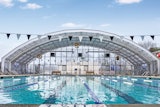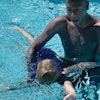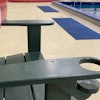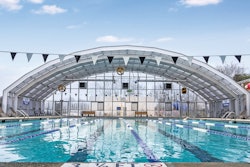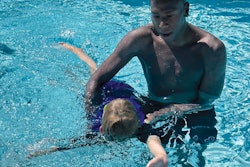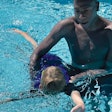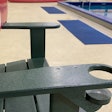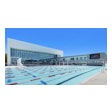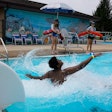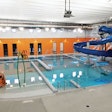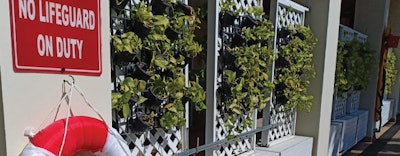
People want to swim — whether that be at public facilities or private gyms, in natural bodies of water or home swimming pools.
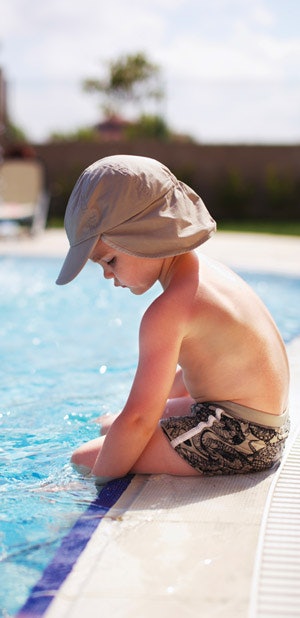
That desire didn't go away when the COVID-19 pandemic struck last year, temporarily shutting down aquatics facilities across the United States. Pool hours were limited or non-existent, leaving individuals to their own aquatics recreation devices. Swimming brings inherent dangers, which only increase when swimmers spread out across less-supervised bodies of water. That relative lack of supervision — combined with a decreased number of swim lessons — have aquatics safety professionals worried that the United States will see an increase in drownings due to the pandemic.
"We can't get our hands on the data yet. It's too early," says Tom Griffiths of the Aquatic Safety Research Group. "The experts out there believe that because pools are either opening late, have limited hours or are not opening at all, when it gets hot and humid, people are going to go to open water or other swimming pools with no lifeguard on duty. It's our experience, we can't prove it yet, but we believe we've seen a rise in rivers and lakes and quarry drownings, because the local kids couldn't go to the pool.
"The data seem to reflect that you're safer and you're less likely to drown in a guarded facility with lifeguards on duty. You're much more likely to drown in the open water, particularly when there's nobody protecting you. Hotel, resort pools, particularly those pools without lifeguards on duty, they really have a lot of tragic drownings."
That danger also exists at home. The industry has seen an increase in backyard pools, which make swimming more accessible while reinforcing the need for safety measures, starting with supervision and life jackets.
"We as an association are very concerned," says Juliene Hefter, executive director and CEO of the Association of Aquatic Professionals, which has recently added former Olympian Matt Biondi as spokesperson for its RESPECT the Water Drowning Prevention Campaign. "Hey, we love pools. We love every type of pool, we just want to see them run and operate safely. It's direct constant supervision. It's swimming in a supervised area, never swim alone, always expect the unexpected.
"A lot of times we see drownings occur when a child was never even expected to be in or near the water. A gate left open and they get into the neighbor's yard. They have a pool and your child gets into it. You have to expect the unexpected anytime you're near or around water. That's that constant direct supervision."
With a changing swimming landscape that includes limited training opportunities, it may take a while to determine the full scope of how the pandemic has changed the industry, and what that means for drownings and aquatic safety.
"We've been having some of those conversations of when we think we'll see this increase," says Lisa Zarda, executive director of the US Swim School Association. "We think it's going to be a little bit in the future. Part of that is people are still not going out as much or not going on vacation. But also, this last year we saw a huge increase in people going out and installing backyard pools. It's been taking people a lot longer than normal to get those pools in, so once those pools are in and once people are out and about and vacationing more, I think that's when we're going to start to see that increase."
RELATED: Product Spotlight 2021: Aquatic Components
Understanding the risk
People swim for a number of reasons — to have fun, relax, compete and get healthy. However, part of avoiding serious safety issues is recognizing water's danger.
"I don't think the general public truly appreciates what a big risk it is for children, particularly non-swimming children," Griffiths says. "Combined with that is the timing of it. I always use the terms quick, quiet and subtle. I know that adults, and even lifeguards, don't realize how quick, quiet and subtle the drowning scenario is. It's over before you know it. Secondly, when a child is in distress, oftentimes that distress resembles safe, enjoyable water play."
Slippery surfaces, chemicals and bacteria present at pools bring safety issues, but drownings remain the top threat. Therefore, all aquatic safety programs start with education. Organizations such as the Aquatic Safety Research Group, the Association of Aquatic Professionals and the US Swim School Association attempt to push information out to every part of the industry — from kids to parents to pool operators. The more people out there aware of the dangers, and what can be done to prevent them from striking, the better.
"It only takes a moment for you to step away and answer the phone or answer the doorbell ringing, or talk to somebody and not have that constant supervision," Hefter says. "No matter what your age is, you can utilize a pool, so we have to just be aware of those things. Deck safety — no running, no pushing, making sure our equipment is in working order, making sure we only have one person on the diving board at a time and they're going off in an area where there's nobody else around. If you're doing water slides, making sure that you're doing the proper distance between each other going down the slides.
"And then making sure that you do that education for children, adults and teenagers. Making sure that they understand that water's fun, but it's also very dangerous. It's teaching your child that a stove is hot. You don't go near a fire, you don't go near a stove. I think people think about that, but they don't always think about doing it when it comes to water."
And it's not just kids. Drowning is the No. 1 cause of injury death in the 1-through-4 age group, but it's also prevalent in older demographics.
"Where I think we actually see a greater spike is kind of the teenage boys," Zarda says. "That's the next jump behind infants and toddlers. We think that's kind of the boys thinking they're invincible. Maybe they're not a good swimmer, but their friends jumped in the lake and they think, 'Okay, I'll go in too.'
"Obviously, the states that have a lot more water like Florida, California and the southern states where it's warmer, we tend to see higher drowning numbers there. And then minority groups definitely are at a higher risk. They did a comparison between 2000 and 2007, and the rate of fatal accident drowning for Blacks across all ages was 1.3 times that of whites. Some of that we think is education that we need to do on a cultural level. Some of what I'm hearing there is their drowning prevention that's been passed down over the years is, 'Just don't go near water.' Then when you get by water, you're stuck and you haven't learned how to swim or learned all the different safety pieces. So, we're just trying to continue to find ways to educate. Once people know and hear the information, it makes perfect sense to learn to swim and have as much in place as possible to help prevent drowning."

Layers of protection
Education is the base layer for any aquatic safety program. When it comes to actually putting safety measures into practice, it starts with supervision.
"We talk about layers of protection. That first layer is always constant direct supervision," Hefter says. "It's educating parents that they're the first line of defense. They need to have that constant direct supervision at all times. Even if they're at a facility that has lifeguards, the lifeguards are there to help with the rules and regulations. They're overseeing the entire facility, whereas as a parent you're in charge of watching your children or the people that are in your care."
Griffiths says that overlapping supervisors can actually have a negative impact, as the Aquatic Safety Research Group has found that groups create a the perfect conditions for a lack of communication. Being attentive to those in your care means a number of things. It requires keeping eyes on them and ensuring they are staying within the areas of the pool that fit their swimming ability. It also requires ensuring those in your care are wearing a life jacket if needed.
"The life jacket has been around for nearly 200 years, but for some reason people don't want to wear it," Griffiths says, noting that every pool should at least have a rack of life jackets available for use. "There are 2-year-olds, 3-year-olds, 4-year-olds, 7-year-olds drowning in all sorts of well-lifeguarded pools with good parents.
"With many people moving to virtual learning, I think it's a good opportunity to add new techniques, new strategies. But also, for the past 100 years, we've constantly been talking about strengthening supervision. All the training agencies have done a good job telling parents, 'Watch your kids. Touch supervision, focus supervision, active supervision.' But as long as we have human beings supervising other human beings, people are going to fall through the cracks."
With that in mind, the safest swimming environments must combine a high level of supervision with a number of other layers of protection that keep all swimmers within their comfort zone.
"It continues to be a challenge to educate parents about those layers of protection," Zarda says. "People don't know what they don't know. The other challenge is, it's not like 'buckle up for safety,' where we can just have one phrase because there's so many pieces. It's swim lessons, it's parental supervision, it's locks and gates. It's hard to condense it into something so digestible for the public. We just focus on continuing to give the best support we can provide to the swim school owners and helping them run the best, safest swim schools in their cities."

Swim lessons
While swimming lessons are just one method of prevention, a 2009 study published in the Archives of Pediatrics and Adolescent Medicine found that formal swim lessons for children between the ages of 1 and 4 years can help reduce the risk of drowning by 88 percent.
The size of individual swim lessons decreased significantly during the pandemic, as people attempt to maintain distance from each other. Private lessons have become more viable, while group lessons are implementing safety measures such as mitigating traffic, wearing face masks, limiting sharing of equipment and placing Plexiglass panels on the edge of the pool. With those safety measures in place and data showing that swimming is a relatively safe activity in the context of the coronavirus, the US Swim School Association has spent a significant portion of the pandemic advocating that swimming lessons are an essential activity.
"We don't know how long it's going to take before swim schools can get back toward their normal capacity," Zarda says. "I'm guessing that's going to be once a majority of people get vaccinated. Again, it's probably going to depend very much state by state and how their numbers are doing. There's going to be some lag time to ramp back up, so I feel like there's going to be that gap between us ramping back up and people getting out and getting on with life."
Proactive prevention
While medical drowning response continues to develop, aquatic safety professionals focus heavily on methods for proactive prevention.
"The reason we concentrate on proactive prevention rather than reactive resuscitation and rescue is because if a lifeguard or parent has to do mouth-to-mouth or CPR, too often the child is not going to be recovered, and if they are they could very well have a toxic brain injury," Griffiths says. "We really stress proactive prevention through life jackets and technology. We still have to work on the reactive rescue resuscitation, but it has to be more balanced.
"When there is a tragedy in a pool and the lifeguards do respond to a victim, they do a good job with the CPR, the AED and everything else. Once the stuff hits the fan, they respond pretty quickly and appropriately. The problem is the recognition and detection."
That job falls primarily on parents, supervisors and lifeguards. However, the pandemic has also had an impact on the lifeguard industry, as the closing of pools forced some experienced staff members to find new roles or jobs entirely unrelated to aquatics.
"We've already had staff issues and trouble finding enough staff and qualified staff. Now all of a sudden we had to say, 'I'm sorry we don't have the hours for you. We're open on a limited basis or we can only hire a limited amount of staff,'" Hefter says. "Now this next summer we have no idea what that's going to look like because we have no idea what's going to be happening with COVID, the pandemic and the limitations we may have for pool operators. I think the biggest thing we're going to see is a lot of those staff and maybe those managers that we've had for years had to go out and look for other jobs. So we lost a lot of people with that experience. Same thing with lifeguards. How are we training them? We'd had to really revamp the way we train people, because it's hard to train lifeguards to rescue somebody when you can't be within 6 feet, or you have to have a mask on. How are we doing that training to ensure that they're trained appropriately? It's going to be a very interesting and challenging summer."
RELATED: Find more solutions for your facility in the Buyers Guide
Virtual training
One benefit of the pandemic in all aspects of society is that it forced people to develop new ways to communicate and learn — even if it means taking lifeguarding out of the pool. The Aquatic Safety Research Group is working to release a form of training that will allow lifeguards to practice their craft from anywhere.
"We're working with Counsilman-Hunsaker and a company called DJS to develop a lifeguard app," Griffiths says, noting the app has been under construction for about five years. "Lifeguards can pick up their phone, tablet or laptop any time, any place, and attempt to detect drowning victims of all ages and sizes within the prescribed time. Hopefully, in less than 20 seconds.
"Basically, they'll select an indoor pool or an outdoor pool. There will be kids, senior citizens and parents in the pool moving around and playing, recreating and lap swimming the way most swimmers do. The drowning victims will start to go into distress. Some will struggle a little longer than others, some will just disappear under the surface, and the lifeguard is required to blow their whistle by tapping on the whistle as soon as they see it. If they miss it, they get replay — go to the tapes, see where it was and how that victim looked."
The goal is to help lifeguards recognize what drowning looks like, and help them transfer the skill from the app to real-life settings.
"This is a tool that's really important and unique, because most of our time is spent on rescue and resuscitation," Griffiths says. "This app will be a tool that lifeguards can actually practice looking for and seeing distress in the water, and reacting to it on their phone. It's a lifeguard simulator, so just like racecar drivers have simulators and pilots have simulators, now — for the first time — lifeguards will have simulators so they can practice scanning and surveillance, which they haven't been able to do.
"We're pretty excited. The whole problem with supervising people around the water, and this is true of many accidents, is the eyes really aren't synced with the brain. The eyes and the brain have a very casual relationship. The eyes take in everything and see everything all the time, but the brain records very little information. Lifeguards and parents need a very intimate connection between their eyes and brain, and that's very difficult to do because as we're supervising our children, our thoughts and emotions are either in the past or present. This app gives them repetition to help stay focused and mindful of the people in this pool setting and to detect drowning victims. Through practice and repetition, it should better sync their eyes and their brain."
Progressing consistently
Repetition and consistency is a theme in all forms of aquatic safety, whether it's drilling lifeguards, posting and enforcing consistent rules in pools or exposing kids to early and frequent education.
"That's the biggest thing with our pools and facilities — that we really try to be consistent," Hefter says. "Consistent with rules and rule enforcement. No diving in shallow water. No horseplay. We've got all these rules and regulations, but they're only good if they're enforced."
The pandemic has opened up new ways to get those messages across, while programs like the Note and Float Life Jacket Fund and Hope Floats continue to donate life jackets and provide scholarships for swim lessons, respectively. The industry will continue to push aquatic safety — during the pandemic and in perpetuity. How safety around COVID-19 will be handled by aquatics professionals may vary by circumstances and locality.
"It's all going to depend on vaccines, and it's going to depend on the various states, because all different states or counties have different regulations right now," Hefter says. "We're going to have to see what happens over the next few months as the vaccine gets out there and protocols are put in place."
This article originally appeared in the April 2021 issue of Athletic Business with the title "The impact of closed pools on water safety & drowning prevention." Athletic Business is a free magazine for professionals in the athletic, fitness and recreation industry. Click here to subscribe.










